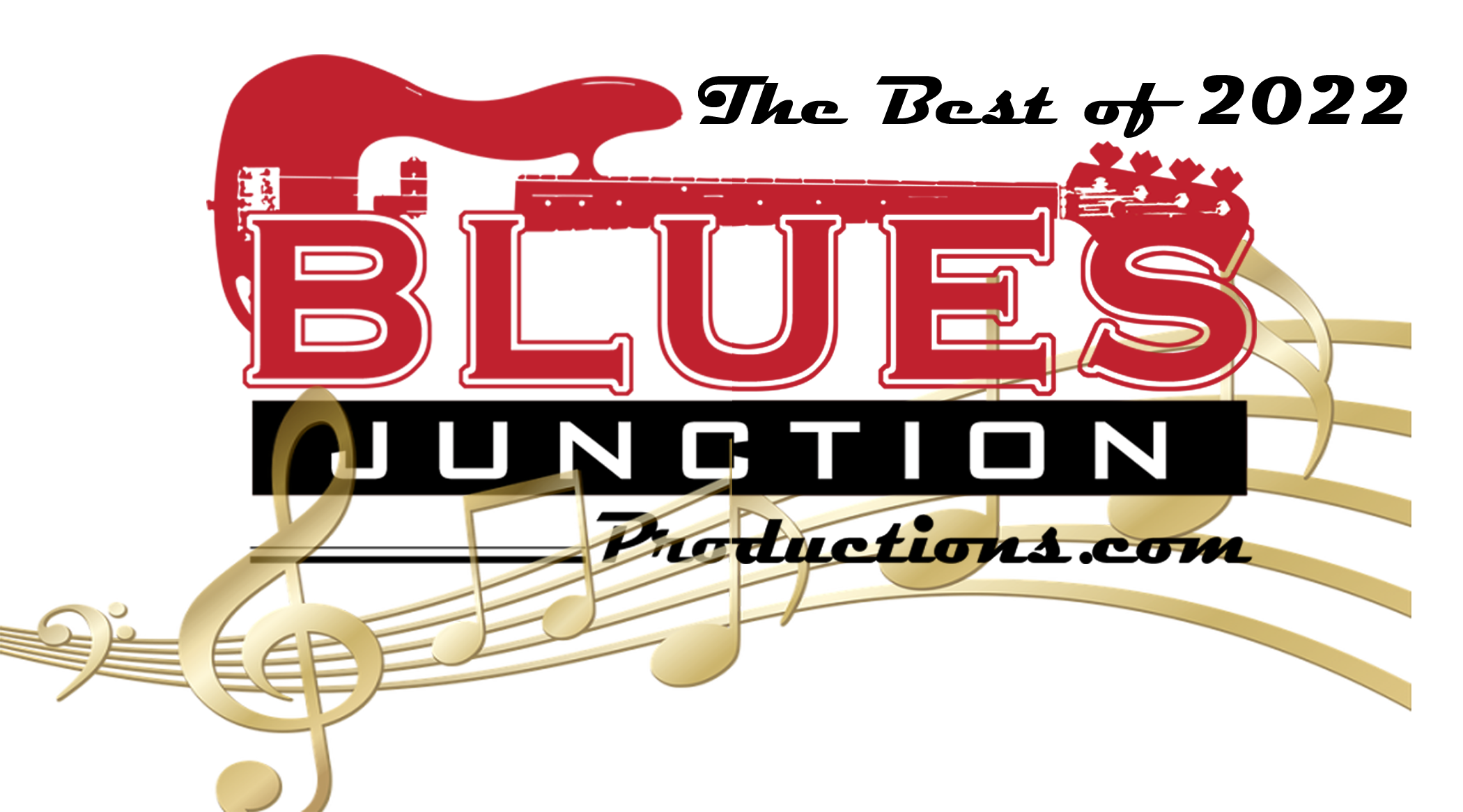
BLUES JUNCTION Productions
7343 El Camino Real
Suite 327
Atascadero, CA 93422-4697
info
- Home
- Letter From the Editor
- Tom Hyslop: A Personal Appreciation
- Top Ten Albums of 2022
- Dave's Top Ten List of Top Ten Lists
- An Appreciation of James Harman
- Album of the Year: The Duke Robillard Band They Called It Rhythm & Blues
- Album Review: Rick Holmstrom Get It!
- Album Review: The Phantom Blues Band - Blues for Breakfast
- Album Review: Bob Stroger & the Headcutters That’s My Name
- Album Review: Hash Brown - Stop! Your Evil Ways
- Archives
- Contact Us
- Links
Re-Visited: The Hollywood Fats Band
December 8, 2016, marks the 30th anniversary of the tragic death of Michael Mann aka ‘Hollywood Fats’. He was one of the most gifted blues guitar players of all time. A mere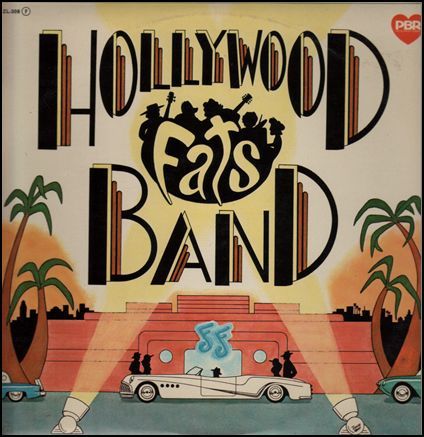
The likelihood of the son of a doctor growing up in the affluent Brentwood section of Los Angeles becoming the champion of a musical style that was virtually non-existent for most Americans was not something on which anyone would lay odds.
However, despite those odds, Michael Mann became an unlikely blues icon. As a youngster his father would drive him to the various Africa-American nightclubs on the other side of Los Angeles so that young Michael could experience this music he so admired. By the time he was a teenager he had established himself as one of the best blues guitar players the world has ever seen. Yet he continued to grow as musician, much to the astonishment of anyone who was fortunate enough to experience the phenomenon of this shooting star.
When Fats replaced Dave Alvin in the Blasters, Phil Alvin said, “I feel like I’ve lost the world’s best songwriter, but gained the world’s best guitar player.” He would also fill some pretty big shoes in the famous blues-rock band Canned Heat. By then Fats had 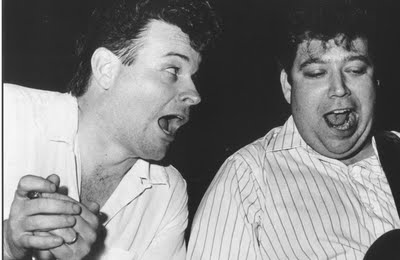 made a name for himself as a part of the James Harman Band.
made a name for himself as a part of the James Harman Band.
Young Hollywood Fats also toured with Muddy Waters, Albert King, J.B. Hutto, John Lee Hooker and Jimmy Witherspoon as part of those famous blues men’s road bands. He could adapt to various blues dialects and inhabit the music as if it were the only style he knew.
Fats also made one recording in a band that bore his name and reflected his own musical sensibilities.
Singer, harmonica player, guitarist and songwriter Al Blake was playing duo gigs with the very gifted pianist Fred Kaplan in Laguna Beach, California. When Fats wasn’t on the road with one of the blues giants mentioned earlier he would sit in with the duo. As Fred Kaplan pointed out, “We played off and on for a couple of years before we were joined by our famous rhythm section.”
I asked Blake how and under what circumstances he met the man Buddy Guy dubbed ‘Hollywood Fats’. Blake said, “It was in 1971 at the Ashrove in Los Angeles. I went up to the dressing room to say hello to Freddy King. I was a huge fan. I knew Freddy from my Oklahoma days. He remembered me because when I was going to see him back in the early 1960’s in Oklahoma City, I was the only white guy in those clubs where he was playing and I stood out.
By the early 70’s Freddy was working with Leon Russell at Shelter Records. He was playing out here in L.A. a lot. I saw him two or three times at various clubs in Southern California. He would always introduce me as one of the best harmonica players in the world, which at that time was an absolute lie. On one of those occasions I went up to the dressing room and Freddy said, ‘Al, I think you should meet this guy. He is the best guitar player I have ever heard.’ He said that about me so I’m thinking that’s bullsh*t. Freddy was just so gracious and magnanimous. He then went downstairs to start his set. He left me in the dressing room with Fats. He was this fat kid with a ponytail and a polyester sports suit that looked like he got it from the big and tall store. There was a cheap acoustic Gibson guitar in the corner of the room, the kind that comes in one of those cardboard cases. I said to him, ‘I’d love to hear you play.’ I was trying to flesh him out, but he wouldn’t play.
I can’t remember what I finally said to him that made him pick up the guitar, but whatever it was he started playing. He sounded exactly like Lightnin’ Hopkins. I’m a pretty perceptive guy, and I know my music. There is probably no other person on the planet at that time who could play like Lightnin’ Hopkins. Hopkins’ playing, as you know Dave, is very idiosyncratic. This kid nailed it. I was stunned. Then Fats went down on stage and tore it up with Freddy King playing in a completely different style than he had demonstrated to me moments earlier.”
I also asked Blake how he put together that remarkable rhythm section which would round out the legendary Hollywood Fats Band. He said, “It was easy. Everyone just wanted to play with Fats. That’s how we got Larry Taylor. He was with Canned Heat in those days. He had played Woodstock with them just a few years earlier. They were making those Hooker and Heat records with John Lee Hooker back in the early 70’s. Richard Innes was with Rod Piazza at the time. Everyone wanted to play with Fats.”
This great band never had it made. They struggled to find an audience in their native Southern California. It was as if Los Angeles area crowds in the 1970s had no room for vintage music. Back then it seemed as if almost every kind of music grappled for the public’s attention... except the blues.
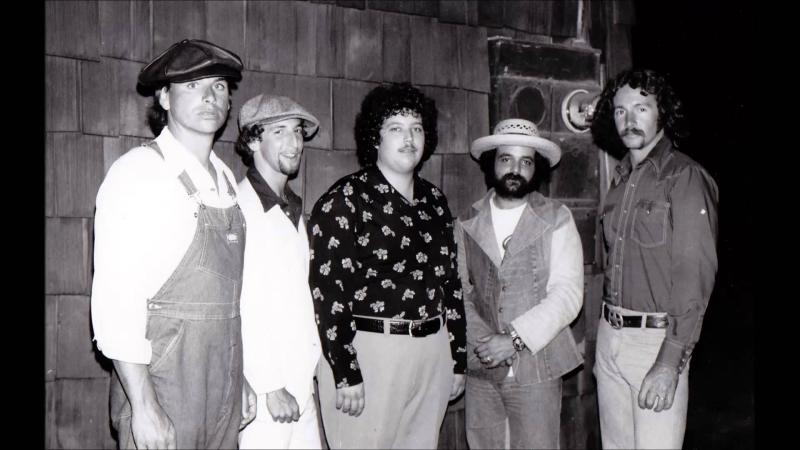 As Blake puts it, “We had a vintage look to us, vintage amps, vintage instruments and were playing vintage music. Nobody was using a stand-up bass in those days...nobody. Nobody was using small drum kits either for that matter. All these things eventually became stylish. However, in the late 70’s people would just stare at us when they showed up at all. We were way ahead of our time. People were not used to hearing this kind of music and they sure weren’t used to hearing it from young, white guys.”
As Blake puts it, “We had a vintage look to us, vintage amps, vintage instruments and were playing vintage music. Nobody was using a stand-up bass in those days...nobody. Nobody was using small drum kits either for that matter. All these things eventually became stylish. However, in the late 70’s people would just stare at us when they showed up at all. We were way ahead of our time. People were not used to hearing this kind of music and they sure weren’t used to hearing it from young, white guys.”
Richard Innes put it this way, “We were just so foreign. There were all these big hair rock bands out there. We didn’t look like rock stars to say the least.”
They also slogged through one of those rough patches this music experiences from time to time. As drummer Innes told me, “I thought we were pretty good at what we were doing at the time, but there was very little appreciation for what we were doing at the time. We played in Laguna Beach a lot, Huntington Beach, places like that, but after several years of beating our heads against the wall and still standing on square one, we pretty much dissolved.”
The Fats Band did however find work backing a plethora of blues greats who were still on the road, but in need of a backup band that knew their way around the music. I asked Innes just a couple of years ago if I could jog his memory and if he could recall some of the blues giants that the Fats band backed up, He recalled playing with Big Joe Turner, Roy Brown, Eddie “Cleanhead” Vinson, Lloyd Glenn, Percy Mayfield, Johnny Shines, Louis Myers, Otis Rush, Albert Collins, Joe Willie Wilkins, Freddie Robinson, Finis Tasby and Lightnin’ Hopkins.
As Kaplan explained, “We played with them, so they didn’t have to play with us. We were versatile enough that we adapted to their styles, not the other way around.” Kaplan went on to say, “Roy Brown paid us a huge compliment when he told us we sounded just like the great rhythm and blues bands that backed him up in the 40’s and early 50’s. We didn’t get paid much, but you can’t buy compliments like that.”
The Fats Bands’ two appearances at the Monterey Jazz Festival represented a high point for the group. The band also played at the first ever Long Beach Blues Festival in 1980.
Getting back to the early days of the band, in 1976 they entered Ted Brinson’s studio in the mostly African-American section of Los Angeles near the intersections of Western and La Brea and cut a record. Brinson was noted for recording various black entertainers perhaps most notably Rudy Ray Moore aka the legendary and mythical Dolemite. Brinson, who was a guitarist and bassist, recorded artists in various musical fields for decades yet hadn’t worked with a straight ahead blues ensemble.
As the Fats Band entered the recently remodeled studio with state of the art recording equipment they immediately threw Brinson for a loop as they requested that the entire session be done on a primitive three track, reel to reel recorder. He was kind of miffed as everyone he had worked with was interested in using whatever modern technology was available. Brinson still owned a three track machine, but it had been put into storage, as he had no plans for using it ever again. So there he was pulling out of storage and dusting off this archaic device for young white guys to make a vintage sounding blues album.
As Blake puts it, “We simply wanted to sound like those old 1950’s Chicago blues records. We did the entire album without overdubs. There is a lot of integrity when you record that way. You also get a very warm, organic room sound.”
As Larry Taylor told me recently, “We were just trying to record some demos so that we had a few songs to share with club owners who were considering booking the band. The tapes were so good we just kept going back into the studio. It didn’t take long before we had more than enough material for a full album.”
What Ted Brinson captured on that old recorder turned out to be one of the most influential and revered blues recordings of the past forty years. However, at the time, very few seemed the least bit interested in putting it out.
The self-produced album was shopped around and turned down by every record label that heard the recording. Finally they caught a break. Bassist Larry Taylor’s brother, Mel Taylor, the drummer of the Ventures, worked in the Los Angeles office of PBR International, a London based independent record label. They finally put out the eleven track album which would eventually be renamed Rock This House after the band’s cover of Jimmy Rogers’ version of Memphis Slim’s tune, which appears as the album’s opening track. So in 1979, in the age of disco, punk and glam rock, came the one album produced and performed by the Hollywood Fats Band.
The album's now iconic art deco album cover art was designed by John “Juke” Logan, a fellow L.A. area blues musician and professional graphic artist.
Years later Black Top Records out of New Orleans re-issued the album on CD. The album has been re-issued a total of four times through the years. Larry Taylor was solely responsible for these re-issues, although Taylor acknowledges it was Blake who put up the money for the initial recordings. Blake was the entrepreneur in the band. As he puts it, “The Hollywood Fats Band was the house that hashish built.”
In 2001, Crosscut Records out of Germany released a two disc set that includes the eleven original tracks that make up Rock This House on disc one. Disc two includes thirteen additional tracks of previously unreleased songs and alternate takes. Simply entitled, Hollywood Fats Band, this two disc set represents the definitive release and is an essential entry into any blues library.
It is only now with the luxury that time affords us can we look back and see that they were an important transitional band in the scope and history of blues music. They pre-dated the 80’s and 90’s blues revival and set an example of how this music can be fresh, vital and rooted in tradition all at the same time. They showed the older blues icons from another era, who were thrilled to be backed by at least one band that understood their music, that they knew how to play it and held it in the highest regard.
As Innes pointed out earlier, time was not on their side and they finally had to disband. Hollywood Fats would go on to gain some well-deserved recognition playing alongside fellow guitarist Kid Ramos in James Harman’s great band.
I asked Ramos about playing guitar with the great Hollywood Fats.
Ramos told me, “When Fats joined the James Harman Band it helped in my own development because he was a walking encyclopedia of styles. He could play anything. I tried to glean as much from him as I could by standing on stage with him for the years he was with the band.
James was very cool about bringing Fats on. He told me ‘You are the guitar player in this band. If you don’t want to play with Fats, just say so.’ For me I thought of it as a wonderful opportunity to learn from one of the all-time greats.
He was just head and shoulders above everybody else. I don’t know if the best stuff he ever played was ever recorded. Back in those days we would play six nights a week and he would just play these amazing solos night after night and take you to places that you have never been. He was just an incredible improviser with such great tone. He got over with the audience every time. He just taught me so much. Not in any type of formal sense, but just being on stage with him and absorbing or trying to absorb his stuff. I think he influenced me in ways I don’t even realize sometimes. To this day, every so often I will play something and think for a moment, ‘Where did that come from?’ In many cases it came from Fats.”
As for the now defunct Hollywood Fats Band they were to have had one last hurrah and then tragedy struck.
By 1986, the 80’s blues revival was in full swing. The Hollywood Fats Band which had 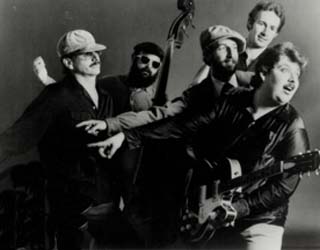 been on the shelf for almost five years had become the stuff of legend. Five extraordinary musicians led by the incomparable genius of the blues guitar were finally primed for success. An audience was now ready to hear vintage music. An entire scene which embodied west coast retro-cool was emerging and prepared to coalesce around these modern pioneers of the genre.
been on the shelf for almost five years had become the stuff of legend. Five extraordinary musicians led by the incomparable genius of the blues guitar were finally primed for success. An audience was now ready to hear vintage music. An entire scene which embodied west coast retro-cool was emerging and prepared to coalesce around these modern pioneers of the genre.
On December 7, 1986, the band reunited and played their first gig in close to five years in a big showcase at Los Angeles’ Music Machine on Pico on the fashionable west side of town. The place was full of the L.A. rock elite trying to be at the right place at the right time. It was suddenly fashionable to be seen in a nightclub where blues music was being performed. The celebrities, as well as the rest of the jam packed crowd, wanted to hear this already legendary guitar player and the great blues band with which he was proud to have been re-united. They didn’t go home disappointed.
However, a dark cloud was looming on the horizon. In the previous weeks during the band’s rehearsals for their triumphant comeback, it was clear that Hollywood Fats enormous appetite for just about everything also included heroin. That triumphant night Hollywood Fats engaged in a kind of excessive dissipation which was then becoming the norm. Into the early morning hours of December 8, 1986, he and other fellow musicians and friends “partied.” At some point in the evening it was clear that Michael ‘Hollywood Fats’ Mann had overdosed on heroin. Rather than face the inevitable questioning which would come from the police, his “friends” left the scene of the crime and left Fats for dead. It was a tragedy on many levels.
As Al Blake put it, “It was so devastating to me because I really believe Hollywood Fats had the potential to save the music. He could have drawn big crowds. Fats not only had talent to spare, but had a stage presence and a persona that was like no one else. He had this kind of worldly, sort of stately persona. He was funny too. He was like the Jackie Gleason of the blues.
People toss words around like genius, savant or prodigy. In the case of Fats it was all 100% true. I’ve never met anybody who embodied all of these things. On top of that he just kept getting better which, until you heard the most recent performance by him, you would think that was impossible.
He was a huge influence on the next generation of guitar players as well. Take Nick Curran for instance. Nick was a huge Hollywood Fats fan. He told me Fats was one of the main inspirations for him to start playing. Then there is Kirk Fletcher and so many 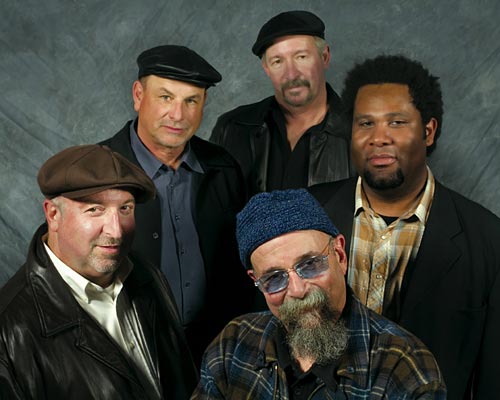 others.”
others.”
The loss of Fats was devastating to Blake. He left the music business altogether for ten years. He of course eventually returned to his beloved blues. As far as the Hollywood Fats Band legacy is concerned, it has enjoyed that rare second act as The Hollywood Blue Flames. The four surviving members began playing together on Al Blake’s solo albums and decided to reform the band and give it a name that would honor the memory of Hollywood Fats.
So the great rhythm section of Richard Innes and Larry Taylor, the extraordinary pianist Fred Kaplan along with singer, harp man, principal songwriter and producer Al Blake made three albums for the Los Angeles based Delta Groove Music record label. Both young Kirk Fletcher and veteran blues man Junior Watson stepped into the mix to play guitar.
In 2005, Delta Groove released Soul Sanctuary. They followed that up with two double 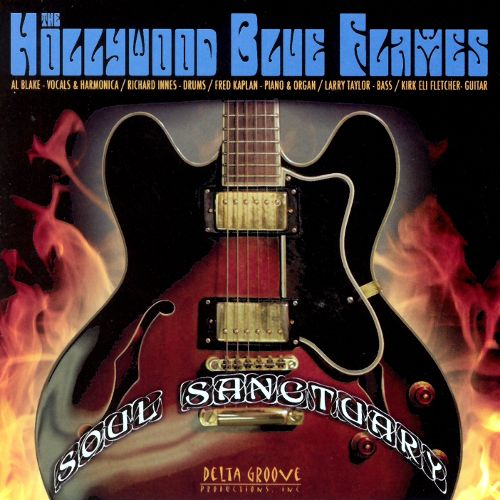 albums which featured new material on disc one and old Fats Band’s live recordings on the second disc. They are 2006’s Road to Rio and 2010’s Deep in America. The second discs are called, Larger Than Life Volumes 1 and 2. They came from old tapes Larry Taylor found in his garage.
albums which featured new material on disc one and old Fats Band’s live recordings on the second disc. They are 2006’s Road to Rio and 2010’s Deep in America. The second discs are called, Larger Than Life Volumes 1 and 2. They came from old tapes Larry Taylor found in his garage.
In the second decade of the new millennium The Hollywood Blue Flames played only occasionally, doing major blues festivals and only very rare club dates. Their last concert date was at a memorial show for the recently departed Lynwood Slim in the fall of 2014. By this time Richard Innes was fighting two different forms of cancer.
On March 26, 2015, Richard Innes, the greatest blues drummer of his generation passed away at the age of 65.
As we remember Hollywood Fats on the 30th anniversary of his death, it is good that we celebrate his music on the 40th anniversary of the recording of the self-titled, Hollywood Fats Band album.
It is hard to say what the future holds for the remaining members of the original Hollywood Fats Band, but what is certain is that the legacy of this band, their extraordinarily gifted guitar player and the one album they made together will live forever. What started out as being a handful of demos became art for the ages.
- David Mac
I would like to thank Al Blake, Richard Innes, Fred Kaplan and Larry Taylor for their help in researching this piece.
Dedicated to the memory of Richard Innes and Michael ‘Hollywood Fats’ Mann
We love to re-visit classic albums. If you do as well, support our efforts.
Click here ->
Copyright 2022 BLUES JUNCTION Productions. All rights reserved.
BLUES JUNCTION Productions
7343 El Camino Real
Suite 327
Atascadero, CA 93422-4697
info